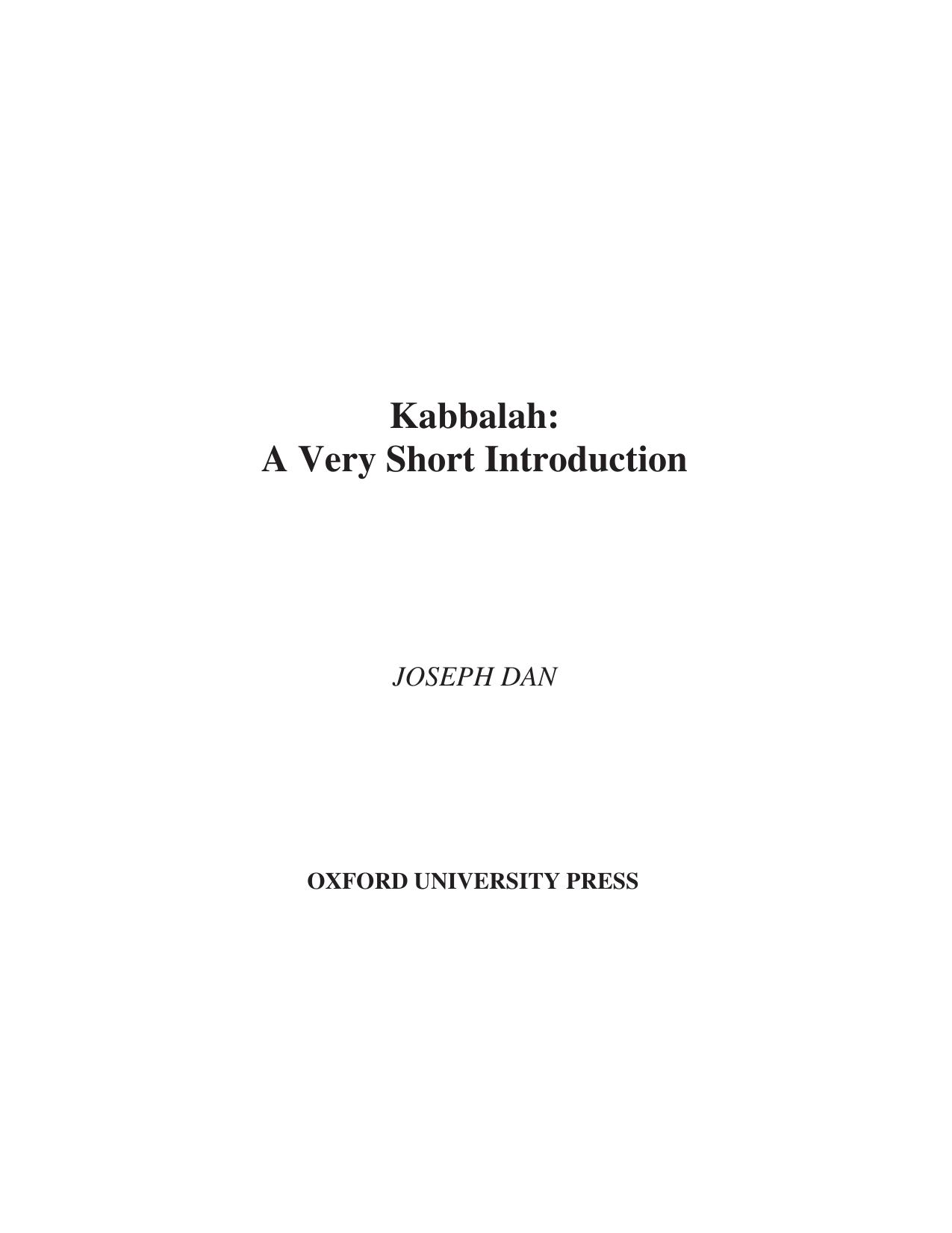Kabbalah: A Very Short Introduction by Joseph Dan

Author:Joseph Dan
Language: eng
Format: epub, pdf
Publisher: Oxford University Press
Published: 2006-01-18T05:00:00+00:00
7 The Kabbalah Denudata was an extensive anthology of kabbalistic works for the Christian world.
5
Modern Times I: The Christian Kabbalah
The kabbalah was transformed from a uniquely Jewish religious tradition into a European concept, integrated with Christian theology, philosophy, science, and magic, at the end of the fifteenth century. From that time to the present it has continued its dual existence as a Jewish phenomenon on the one hand and as a component of European culture on the other hand. The failure to distinguish between the two different—actually, radically different—meanings of the kabbalah in the intrinsic Jewish context and in the European-Christian context is a key reason for the confusion surrounding the term and concept of the kabbalah today. Readers are disappointed when they do not find the characteristics of the Jewish kabbalah in the writings of Christian kabbalists, and vice versa. The confusion is increased by the fact that there is no unanimity in the usage of the term either within Judaism or outside of it, so that various, different and conflicting conceptions of what the kabbalah is prevail in both cultures. The following paragraphs are not intended to explain what the kabbalah—or even the Christian kabbalah—“really” is. They constitute an attempt to present the main outlines of the development of the different meanings and attitudes that contributed to the multiple faces of the kabbalah in European (and, later, American) Christian culture.
The development of the Christian kabbalah began in the school of Marsilio Ficino in Florence, in the second half of the fifteenth century. It was the peak of the Italian Renaissance, when Florence was governed by the Medici family, who supported and encouraged philosophy, science, and art. Florence was a gathering place for many of the greatest minds of Europe, among them refugees from Constantinople, which was conquered by the Turks in 1453. Ficino is best known for his translations of Plato’s writings from Greek to Latin, but of much importance was his translation to Latin of the corpus of esoteric, mysterious old treatises known as the Hermetica. These works, probably originating from Egypt in late antiquity, are attributed to a mysterious ancient philosopher, Hermes Trismegestus (The Thrice-Great Hermes), and they deal with magic, astrology, and esoteric theology. Ficino and his followers found in these and other works a new source for innovative speculations, which centered around the concept of magic as an ancient scientific doctrine, the source of all religious and natural truth.
A great thinker who emerged from this school was Count Giovani Pico dela Mirandola, a young scholar and theologian, who died at age thirty-three in 1496.Pico took a keen interest in the Hebrew language, and had Jewish scholars as friends and teachers. He began to study the kabbalah both in Hebrew and in translations to Latin made for him by a Jewish convert to Christianity, Flavius Mithredates. His best-known work, the “Nine Hundred Theses,” included numerous theses that were based on the kabbalah, and he famously proclaimed that Christianity’s truth is best demonstrated by the disciplines of magic and kabbalah.
Download
Kabbalah: A Very Short Introduction by Joseph Dan.pdf
This site does not store any files on its server. We only index and link to content provided by other sites. Please contact the content providers to delete copyright contents if any and email us, we'll remove relevant links or contents immediately.
Man's Search for Meaning by Viktor E. Frankl(2252)
The Secret Power of Speaking God's Word by Joyce Meyer(2248)
Mckeown, Greg - Essentialism: The Disciplined Pursuit of Less by Mckeown Greg(2110)
MOSES THE EGYPTIAN by Jan Assmann(1968)
Unbound by Arlene Stein(1938)
Devil, The by Almond Philip C(1897)
The Complete Dead Sea Scrolls in English (7th Edition) (Penguin Classics) by Geza Vermes(1837)
I Capture the Castle by Dodie Smith(1567)
Schindler's Ark by Thomas Keneally(1508)
The Invisible Wall by Harry Bernstein(1458)
The Gnostic Gospel of St. Thomas by Tau Malachi(1408)
The Bible Doesn't Say That by Dr. Joel M. Hoffman(1371)
The Secret Doctrine of the Kabbalah by Leonora Leet(1265)
The Jewish State by Theodor Herzl(1251)
The Book of Separation by Tova Mirvis(1223)
A History of the Jews by Max I. Dimont(1205)
The Dead Sea Scrolls Bible by Martin G. Abegg(1197)
Political Theology by Carl Schmitt(1185)
Oy!: The Ultimate Book of Jewish Jokes by David Minkoff(1102)
